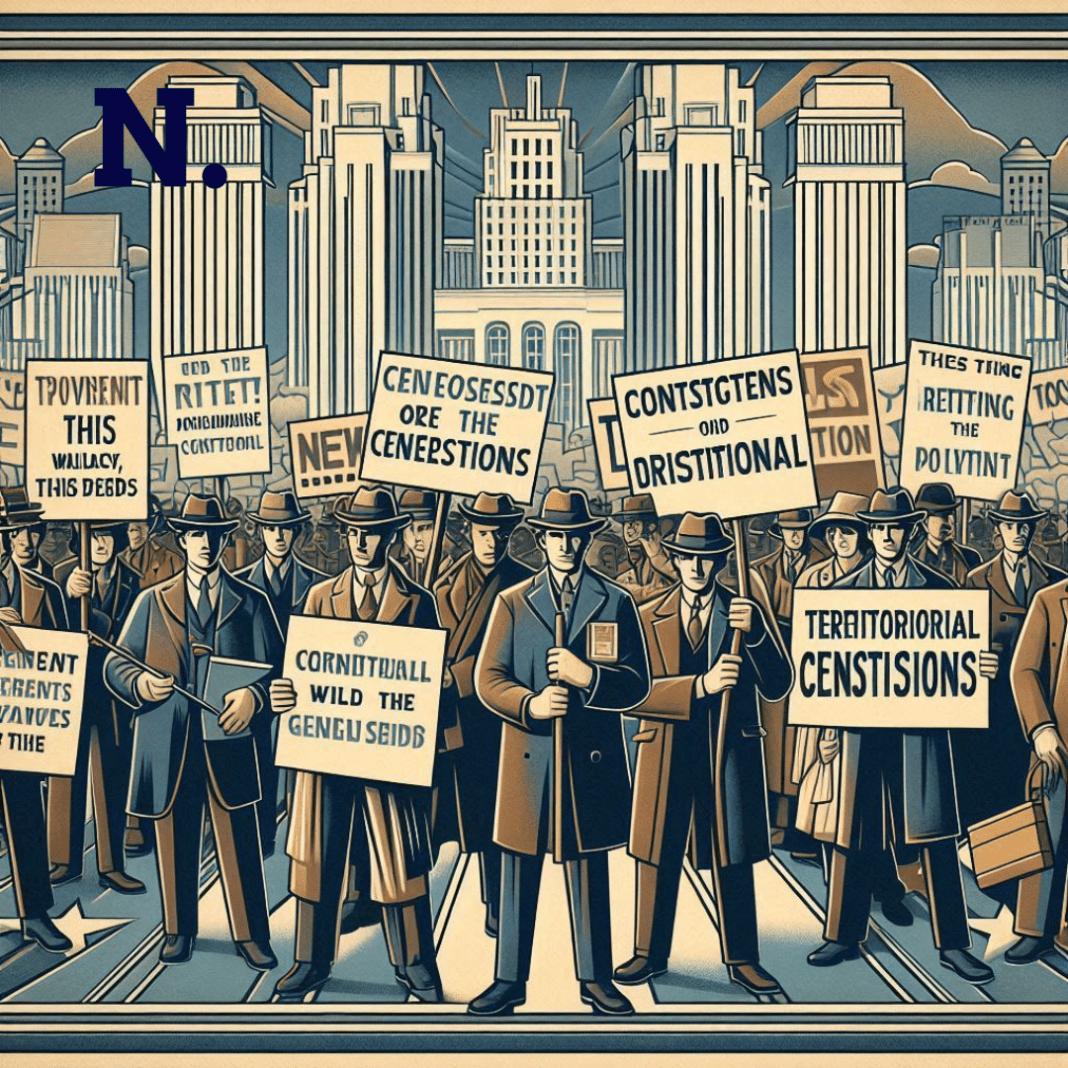Armenia is currently witnessing widespread protests against Prime Minister Nikol Pashinyan’s contentious territorial concessions to Azerbaijan. These events have unveiled the profound tensions and vulnerabilities confronting the Armenian state, highlighting the challenges of balancing national security with diplomatic relations with neighboring countries.
Calls for Resignation Amid Public Outrage in Armenia
In the previous month, Archbishop Bagrat Galstanyan addressed a massive crowd of forty thousand demonstrators in Yerevan, Armenia’s capital, urging Prime Minister Pashinyan to resign. The protesters were united in their disapproval of Pashinyan’s decision to cede four villages to Azerbaijan without securing any reciprocal concessions, a move many Armenians see as a betrayal and a threat to national security.
Pashinyan’s Ascendancy in Armenia
The Armenian revolution of 2018 catapulted Pashinyan to power following mass protests against President Serzh Sargsyan’s bid for a third term. There was a great deal of unhappiness during Sargsyan’s administration because of accusations of electoral fraud and corruption. The opposition comprised various political factions, with Pashinyan, a liberal pro-European parliamentarian, emerging as the leading figure, advocating for democracy and the rule of law.
The 2018 Revolution: A Pivotal Moment for Armenia
In March 2018, Pashinyan embarked on a protest march from the northern city of Gyumri to Yerevan. By the time he reached the capital, the number of protesters had grown to fifty thousand. During a brief meeting, Pashinyan demanded Sargsyan’s resignation and was detained along with other protesters. This led to further rallies, eventually drawing 250,000 participants—approximately 10% of Armenia’s population. On May 8, the Armenian Parliament appointed Pashinyan as prime minister.
Commitment to Artsakh and Subsequent Conflicts
After taking office, Pashinyan visited Artsakh, a predominantly Armenian region within Azerbaijan, and affirmed the resolve of its citizens and Armenians to defend against any aggression. However, clashes soon erupted in Nakhchivan, with Azerbaijan gaining territory. Pashinyan faced criticism for not effectively countering Azerbaijan’s advances but retained popularity due to his anti-corruption reforms. In December 2018, Pashinyan called for an election, winning 70% of the vote.
The 2020 War and Its Consequences for Armenia
In 2020, Azerbaijan invaded Artsakh, leveraging its larger population and stronger economy to field a superior military. Armenia, relying on outdated Russian weaponry, was unprepared. Critics argued that previous Azerbaijani attacks had not been taken seriously, hindering Armenia’s preparation. Despite Pashinyan’s efforts, Armenia faced strategic disadvantages. When Azerbaijan captured Shushi, a strategic town, a ceasefire was reached, which many Armenians saw as a capitulation.
Ceasefire Agreement and Continuing Tensions
The ceasefire agreement required Armenia to relinquish most of Artsakh, imposing obligations solely on Armenia. This left Armenia vulnerable to future attacks. In 2022, Azerbaijan imposed a blockade on the remaining part of Artsakh, which many viewed as genocidal. Pashinyan, once a staunch advocate for Artsakh, conceded it was Azeri territory, contradicting the wishes of 98% of Armenians. His decision to withdraw troops led to the ethnic cleansing of over 120,000 Armenians from Artsakh in 2023.
Current Protests and Public Dismay
Pashinyan’s repeated concessions to Azerbaijan have emboldened the latter. Azerbaijan now claims some Armenian towns, arguing that the de facto border is incorrect. Western nations, benefiting from Azeri oil and gas, support negotiations for a well-defined border. Eighty percent of Armenians oppose ceding towns in the Tavush area before securing other terms.
Church Leadership and Civil Disobedience
Archbishop Galstanyan has become a prominent protest leader, organizing a march from Tavush to Yerevan to demand Pashinyan’s resignation. He encouraged students to engage in civil disobedience by leaving classes and blocking streets if the demand was not met. In response, Pashinyan, once a human rights advocate, deployed police to detain hundreds of protesters. Over the past month, thousands have gathered in Yerevan.
Pashinyan’s Agenda and Public Resistance
In spite of the protests, Pashinyan keeps advancing his goals. Recently, four villages were handed over to Azerbaijan, leading locals to burn down their properties in a final act of resistance.
Looking Forward: The Need for Strategic Planning
Pashinyan sees border demarcation as a step toward global stability. However, Azerbaijan has consistently violated peace agreements. In 2020, Azerbaijan agreed to ensure free movement into Artsakh, yet blockaded it two years later. In 2023, following a ceasefire, Azerbaijan attacked Armenia again. As long as Armenia keeps making compromises, Azerbaijan will not be motivated to pursue true peace.
Mobilizing for Change
Armenians are understandably outraged and seek to remove Pashinyan from office. A new government must respect the desire to safeguard territorial integrity. This is the aim of Galstanyan’s continuous demonstrations. However, a strategic approach is necessary for success. Galstanyan’s efforts must extend beyond immediate actions and adopt a long-term plan. Engaging various groups, including trade unions, is crucial to building a stronger movement.
Conclusion: Defending Armenia’s Future
To protect Armenia from Azeri imperialism, modernizing the military is imperative. A more balanced power dynamic might deter aggression and guarantee peace. Armenian soldiers and workers deserve better conditions and benefits. The protests must continue to pressure the government for change, ensuring Armenia’s security and sovereignty in the face of ongoing threats.





